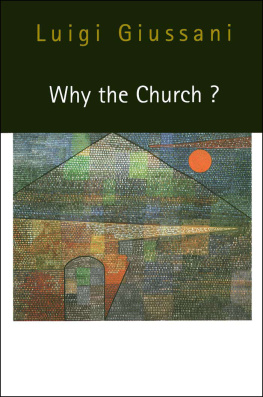Luigi Ballabio - Implementing QuantLib
Here you can read online Luigi Ballabio - Implementing QuantLib full text of the book (entire story) in english for free. Download pdf and epub, get meaning, cover and reviews about this ebook. year: 2015, publisher: leanpub.com, genre: Computer. Description of the work, (preface) as well as reviews are available. Best literature library LitArk.com created for fans of good reading and offers a wide selection of genres:
Romance novel
Science fiction
Adventure
Detective
Science
History
Home and family
Prose
Art
Politics
Computer
Non-fiction
Religion
Business
Children
Humor
Choose a favorite category and find really read worthwhile books. Enjoy immersion in the world of imagination, feel the emotions of the characters or learn something new for yourself, make an fascinating discovery.

- Book:Implementing QuantLib
- Author:
- Publisher:leanpub.com
- Genre:
- Year:2015
- Rating:3 / 5
- Favourites:Add to favourites
- Your mark:
- 60
- 1
- 2
- 3
- 4
- 5
Implementing QuantLib: summary, description and annotation
We offer to read an annotation, description, summary or preface (depends on what the author of the book "Implementing QuantLib" wrote himself). If you haven't found the necessary information about the book — write in the comments, we will try to find it.
Implementing QuantLib — read online for free the complete book (whole text) full work
Below is the text of the book, divided by pages. System saving the place of the last page read, allows you to conveniently read the book "Implementing QuantLib" online for free, without having to search again every time where you left off. Put a bookmark, and you can go to the page where you finished reading at any time.
Font size:
Interval:
Bookmark:

This book is for sale at http://leanpub.com/implementingquantlib
This version was published on 2020-09-07

* * * * *
This is a Leanpub book. Leanpub empowers authors and publishers with the Lean Publishing process. Lean Publishing is the act of publishing an in-progress ebook using lightweight tools and many iterations to get reader feedback, pivot until you have the right book and build traction once you do.
* * * * *
The author has used good faith effort in preparation of this book, but makes no expressed or implied warranty of any kind and disclaims without limitation all responsibility for errors or omissions. No liability is assumed for incidental or consequential damages in connection with or arising out of the use of the information or programs contained herein. Use of the information and instructions in this book is at your own risk.
The cover image is in the public domain and available from the New York Public Library. The cover font is Open Sans Condensed, released by Steve Matteson under the Apache License version 2.0.
With the enthusiasm of youth, .
Standard or not, the project is thriving; at the time of this writing,each new release is downloaded a few thousand times, there is a steadystream of contributions from users, and the library seems to be usedin the real worldas far as I can guess through the usual shroud ofsecrecy used in the financial world. All in all, as a projectadministrator, I can declare myself a happy camper.
But all the more for that, the lack of proper documentation shows.Although a detailed class reference is available (that was aneasy task, since it can be generated automatically) it doesnt let onesee the forest for the trees; so that a new user might get theimpression that the QuantLib developers share the views of the Bellmanfrom Lewis Carrolls Hunting of the Snark:
What use are Mercators North Poles and Equators,
Tropics, Zones and Meridian Lines?
So the Bellman would cry: and the crew would reply,
They are merely conventional signs!
The purpose of this book is to fill a part of the existing void. It isa report on the design and implementation of QuantLib, alike inspiritbut, hopefully, with less frightening resultsto the How Idid it book prominently featured in Mel Brooks YoungFrankenstein. If you areor want to bea QuantLib user, you willfind here useful information on the design of the library that mightnot be readily apparent when reading the code. If youre working inquantitative finance, even if not using QuantLib, you can still readit as a field report on the design of a financial library. You willfind that it covers issues that you might also face, as well as somepossible solutions and their rationale. Based on your constraints, itis possibleeven likelythat you will choose other solutions; butyou might profit from this discussion just the same.
In my descriptions, Ill also point out shortcomings in the currentimplementation; not to disparage the library (Im pretty much involvedin it, after all) but for more useful purposes. On the one hand,describing the existing pitfalls will help developers avoid them; onthe other hand, it might show how to improve the library. Indeed, italready happened that reviewing the code for this book caused me to goback and modify it for the better.
For reasons of both space and time, I wont be able to cover everyaspect of the library. In the first half of the book, Ill describe afew of the most important classes, such as those modeling financialinstruments and term structures; this will give you a view of thelarger architecture of the library. In the second half, Ill describea few specialized frameworks, such as those used for creatingMonte Carlo or finite-differences models. Some of those are morepolished than others; I hope that their current shortcomings will beas interesting as their strong points.
The book is primarily aimed at users wanting to extend the librarywith their own instruments or models; if you desire to do so, thedescription of the available class hierarchies and frameworks willprovide you with information about the hooks you need to integrateyour code with QuantLib and take advantage of its facilities. Ifyoure not this kind of user, dont close the book yet; you can finduseful information too. However, you might want to look at theQuantLib Python Cookbook instead. It can be useful to C++ users, too.
And now, as is tradition, a few notes on the style and requirements ofthis book.
Knowledge of both C++ and quantitative finance is assumed. Ive nopretense of being able to teach you either one, and this book is thickenough already. Here, I just describe the implementation and designof QuantLib; Ill leave it to other and better authors to describe theproblem domain on one hand, and the language syntax and tricks on theother.
As you already noticed, Ill write in the first person singular.True, it might look rather self-centeredas a matter of fact, I hopeyou still havent put down the book in annoyancebut we would feelrather pompous if we were to use the first person plural. The authorof this book feels the same about using the third person. After a bitof thinking, I opted for a less formal but more comfortable style(which, as you noted, also includes a liberal use of contractions).For the same reason, Ill be addressing you instead of theproverbial acute reader. The use of the singular will also help toavoid confusion; when I use the plural, I describe work done by theQuantLib developers as a group.
I will describe the evolution of a design when it is interesting onits own, or relevant for the final result. For the sake of clarity,in most cases Ill skip over the blind alleys and wrong turns taken;put together design decisions which were made at different times; andonly show the final design, sometimes simplified. This will stillleave me with plenty to say: in the words of the Alabama Shakes,why is an awful lot of question.
I will point out the use of design patterns in the code I describe.Mind you, Im not advocating cramming your code with them; they shouldbe applied when theyre useful, not for their own sake.However, QuantLib is now the result of several years of coding andrefactoring, both based on user feedback and new requirements beingadded over time. It is only natural that the design evolved towardpatterns.
I will apply to the code listings in the book the same conventionsused in the library and outlined in .
And now, lets dive.
The statement that a financial library must provide themeans to price financial instruments would certainly have appealed toMonsieur de La Palisse. However, that is only a part of the wholeproblem; a financial library must also provide developers with themeans to extend it by adding new pricing functionality.
Foreseeable extensions are of two kinds, and the library must alloweither one. On the one hand, it must be possible to add new financialinstruments; on the other hand, it must be feasible to add new meansof pricing an existing instrument. Both kinds have a number ofrequirements, or in pattern jargon, forces that the solution mustreconcile. This chapter details such requirements and describes thedesign that allows QuantLib to satisfy them.
Font size:
Interval:
Bookmark:
Similar books «Implementing QuantLib»
Look at similar books to Implementing QuantLib. We have selected literature similar in name and meaning in the hope of providing readers with more options to find new, interesting, not yet read works.
Discussion, reviews of the book Implementing QuantLib and just readers' own opinions. Leave your comments, write what you think about the work, its meaning or the main characters. Specify what exactly you liked and what you didn't like, and why you think so.







